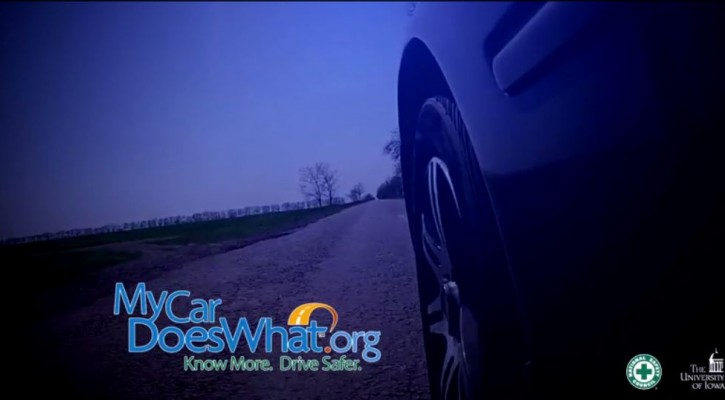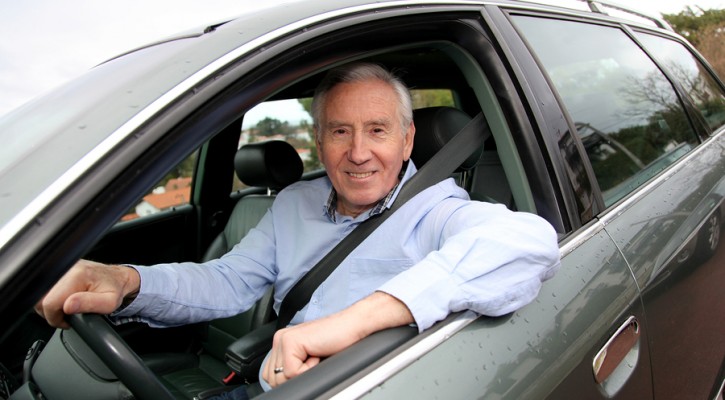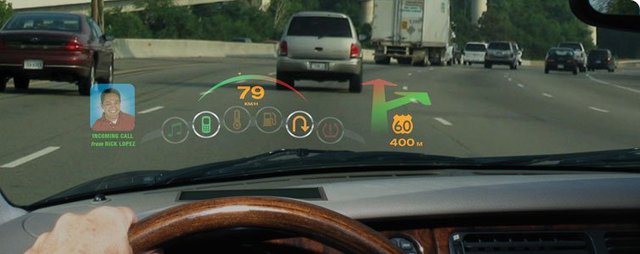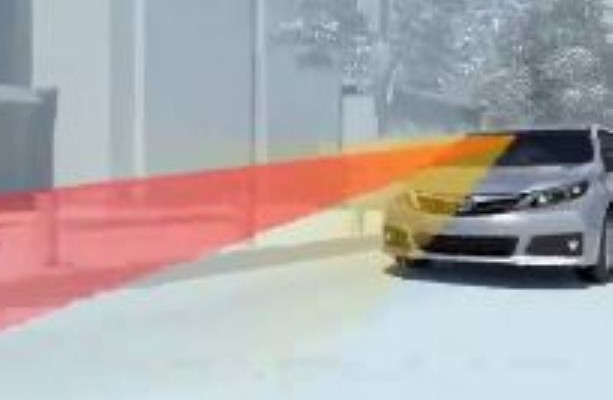Tag Archive: Safe driving

My Car Does What Offers Info On New Car Safety Technology
July 22, 2015
For those with a new car or those considering the purchase of a new car, My Car Does What.org offers an explanation of new car safety technologies available in new vehicles, including some that buyers may not have been aware were available.
Funded by the Toyota Safety Research and Education Program Settlement the site was developed by the National Safety Council and the University of Iowa. With new car safety technologies entering the market at a rapid pace and older technologies being updated, the website is designed to inform vehicle owners about the different technologies and teach drivers how to use them.
A lot of new car safety technology is getting a lot of press such as crash avoidance and lane departure systems but some new safety systems may be surprising to drivers including:
- Terrain management – adjusts speed and suspension systems when moving from paved to unpaved roads.
- Hill descent assist – aids drivers balance the need between braking and speed depending on the degree of the downhill grade.
- Hill start assist – When stopped facing uphill, keeps the car from rolling back by holding the brake until the gas pedal is activated.
- Health and workload monitoring – Monitors a driver’s vital signs and can alter car functions during a health emergency.
- Cornering braking control – Adjusts the brakes independently to keep the car on the road if a driver is approaching a sharp curve or corner too fast.
Other explanations of new and updated car safety systems include:
- Anti-lock braking
- Forward collision warning
- Adaptive and active suspension
- Adaptive headlights
- Automatic emergency braking
- Electronic braking assistance
- Obstacle detection
- Pedestrian detection
- High speed alert
- Adaptive headlights
- Night vision
- Adaptive cruise control
- Tire pressure monitoring
- Road surface warning
- Back-up cameras
- Lane departure warning
The actual list of features is much longer and the website includes both written explanations and videos on each car safety system. It also includes information on auto safety research.
Read more: My Car Does What.org

Driving Dehydrated And Without Rest Like Driving Drunk
July 21, 2015
Two studies from researchers in Great Britain show that driving while dehydrated and driving too long without a break on long trips can be dangerous.
The first study conducted by researchers at Loughborough University in England looked at the effects dehydration had on drivers. The researchers conducted a two-day experiment to compare driving abilities when drivers were hydrated and dehydrated. On the first day subjects who were properly hydrated were observed while driving on a simulated driving course. According to the researchers, the hydrated drivers had 47 driving incidents. On the second day, when the subjects were dehydrated, the number of incidents more than doubled to 101 incidents.
According to the researchers, the number of driving incidents recorded by those subjects that were dehydrated were equivalent to someone operating a vehicle with a blood alcohol content of 0.08, the legal limit in both the UK and the US. The incidents recorded included, lane weaving, braking late, and not stopping at the stop line at intersections.
According to WebMD.com. some of the symptoms of dehydration can include:
- Weakness
- Dizziness
- Palpitations (feeling that the heart is jumping or pounding)
- Confusion
- Sluggishness
- Fainting
All symptoms similar to alcohol intoxication.
Another poll conducted by IAM, a British highway safety organization, shows that drivers tend to drive too far between breaks on long trips. According to the drivers polled, 65 percent didn’t stop for breaks on long trips because they didn’t feel they needed to. Seventy- nine percent of the drivers polled said they wouldn’t stop unless there was a rest stop conveniently located on the highway.
The stresses of dealing with highway traffic along with what’s known as “highway hypnosis” can cause a driver to become fatigued and lose his or her focus on the whole driving picture. Without those refreshing breaks, fatigue can easily set in and, as shown by the research mentioned above, becoming dehydrated can lead to driver errors.
Whether they feel the need or not, drivers should stop at least every two hours or 100 miles to rest and refresh themselves. stopping for a short break to relax and have a drink can help a driver avoid fatigue and the problems caused by dehydration.
Drinking caffeinated drinks are fine if you want to fight off fatigue but caffeine has a diuretic effect that causes the body to lose fluids. To make the most of your rest breaks, alternate drinks between caffeinated drinks such as coffee or cola and non-caffeinated drinks such as water or fruit juice. Avoid highly caffeinated “energy drinks” at all costs.
Read more: Dehydrated drivers make the same number of mistakes as drink drivers
Two-thirds of drivers won’t take rest breaks on any long journey, IAM finds

Older Drivers Can Be Aided By Technology
July 17, 2015
When it comes to older drivers, stereotypes aren’t necessarily true. Years ago, safety experts predicted a traffic nightmare as baby boomers reached old age but that hasn’t turned out to be the case. In fact, traffic data from the Insurance Institute of Highway Safety shows that traffic deaths among drivers 70 and older have been on a steady decline since the high point in 1997.
There are fewer drivers over the age of 70 and they tend to drive fewer miles. Safety experts feel that many older drivers “self regulate”; that is they tend to restrict driving to less busy times of the day and they avoid driving at night. Another reason for the decline in deaths of older drivers is that older drivers tend to be healthier and have better medical care than drivers in the past.
It’s impossible to tell at what age a driver is too old to drive. It depends on the individual driver and everyone ages at a different rate. A new study published recently tracked 1000 people born in 1972-73. Using a range of biomarkers, they found that the biological age of the one-thousand 38 year olds ranged from 30 to 60 years apart. Some were aging rapidly while others aged very slowly.
Still, it’s undeniable that most people will reach an age when they’ll no longer be able to drive and many families will face the difficult decision of when to take away the keys.
However, for those drivers reaching their 70’s and still driving safely, technology has the answer to help them to continue to drive safely and, hopefully, reduce the fears that any family members may have. If they can afford it, a new car with the following features can help to keep them and any other driver, regardless of their age, safer on the road. While these packages may cost a bit more, their price may be offset by a reduction in insurance costs.
- Collision Avoidance – Collision avoidance technology uses a combination of either radar, lasers, and cameras to keep an eye on vehicles and pedestrians ahead. Those systems work together to warn a drivers if they’re approaching too closely to another vehicle or object. If the driver doesn’t heed the warnings, the system will apply the brakes and stop the car.
- Lane Departure Warning and Prevention – This system warns a driver if the vehicle is drifting out of the lane and uses the dynamic braking system to steer the car back into the lane if the driver doesn’t take action.
- Adaptive Headlights – This system turns the headlights in the direction of the wheels to illuminate the road more clearly on curves.
- Blind Spot Detection – This system uses sensors to detect other vehicles in a driver’s blind spot to warn a driver who’s about to move into another lane or who may be drifting over the line. These systems can either warn the driver or work together with the lane departure system to prevent a driver from moving over.
To find a list of vehicle manufacturers who offer these technologies, visit: Insurance Institute for Highway Safety – Crash avoidance features by make and model

Heads Up Displays, Helpful Or Harmful?
June 8, 2015
An article by Joel Feldman, the founder of End Distracted Driving points out the possible dangers of heads up displays that are being developed for automobiles. Heads up displays are supposed to offer the promise of less driver distraction because the driver can view dashboard information without taking his or her eyes off the road ahead. However, rather than making the driving environment safer, some safety experts fear that heads up displays will, instead, just add to the mass of distractions facing drivers today.
Heads up display technology or HUDs as they are commonly known, have been in the aviation industry for decades. Military aircraft commonly use HUDs as an aid in dogfights and on bombing runs. Where HUDs in military aircraft differ from the civilian use of HUDs in cars is that the military HUD is often helping the pilot to focus on and aim at a target that may not be in view of the pilot; military pilots don’t focus on the HUD at all times.
There’s an old saying in military aviation that to be safe, a pilot must first aviate, navigate, and then communicate. Basically, what that means is that the pilot has to concentrate first and foremost on flying the aircraft. All of the navigation and communication input can be distracting and make the pilot lose focus on the job of flying the aircraft.
The same is true for cars. While the HUD is supposed to allow the driver to keep his or her eyes on the road, all of the information beamed on the windshield can actually work to make the driver lose focus on the road ahead. The driver must first drive the car and that means looking at much more than just the road directly ahead.
Hazards can come at a driver from all directions and the driver must be constantly on the lookout for those hazards. Information such as incoming call or email notices, road directions, and a number of other bits of info that could be projected can act to distract the driver’s vision from further down the road or from the sides and rear of the car where hazards could be approaching.
Safety experts say that, despite the claims of the HUD manufacturers that the technology will make the driving environment safer, there are no studies to back up those claims. Until those studies are done, vehicle manufacturers should put the brakes on the introduction of heads up displays.
Read more: Heads-Up Displays are Not an Answer to Driver Distraction
Photo credit: Pico Projector-Info.com

Toyota To Include Collision Avoidance Technology In US Cars
March 31, 2015
Toyota announced yesterday that they will be including collision avoidance technology as a low cost option in US vehicles beginning this year. The new “multi-feature, integrated safety packages” will be offered first in the RAV4 Hybrid SUV and the Lexus fourth-generation RX luxury crossover SUV and will be “introduced across nearly all U.S. Toyota and Lexus models and trim levels, top-to-bottom, by the end of 2017.”
Trying to get a jump on the competition while hoping, at the same time, to earn the Insurance Institute for Highway Safety (IIHS) “Top Pick+” safety rating, Toyota will be offering the collision avoidance packages at a sharply reduced rate to US customers. According to the Toyota press release, the “features help address three key areas of accident protection: preventing or mitigating rear collisions, keeping drivers within their lane, and enhancing road safety during night time driving.”
The collision avoidance technology will be offered in the form of two packages: “Toyota Safety Sense C for compact cars and TSS P for mid-sized and premium models will be available as an optional accessory from approximately $300 and $500, respectively.” That seems to be a very low price and will likely be offset by savings in the cost of insurance.
For compact cars, the Safety Sense C package will combine a camera and laser radar that will sense the possibility of a collision and warn the driver to slow with both audio and visual signals. If the driver hits the brake, the system will apply additional braking force. If the driver doesn’t react, the brakes will be applied to slow the vehicle by 19 mph. If the vehicle is traveling at speeds above 19 mph, it won’t stop the car completely but it will lessen the collision forces.
The package also includes a Lane Departure Alert (LDA) that can recognize visible white and yellow lines and alert the driver if the vehicle is departing from the lane. To alert the driver, the system uses both audio and visual alarms along with steering wheel vibration. Some models will also be equipped with Lane Keep Assist (LKA) that will control the power steering and help keep the vehicle within the lane.
Another feature is the Automatic High Beam (AHB) which uses a camera to detect oncoming vehicles and automatically switches the headlights from high to low beam and back again after the vehicle has passed.
On higher end models, the Safety Sense P option will use a camera and millimeter-wave radar for ‘enhanced performance.” The Safety Sense P option will combine all of the features of the Safety Sense C option along with a pedestrian detection function and Dynamic Cruise Control.
The pedestrian detection function detects pedestrians in addition to other vehicles to warn the driver and applies automatic braking if the driver doesn’t react in time.
The Dynamic Cruise Control detects the distance between vehicles and automatically slows the vehicle to maintain a safe following distance.
Toyota warns, wisely, that the collision avoidance technology systems aren’t meant to replace the driver and that “drivers should always be responsible for their own safe driving” and always maintain awareness of the driving environment.
Read more: Lexus and Toyota Roll-Out Low-Cost Automated Braking Safety Packages
Image compliments of Toyota USA
